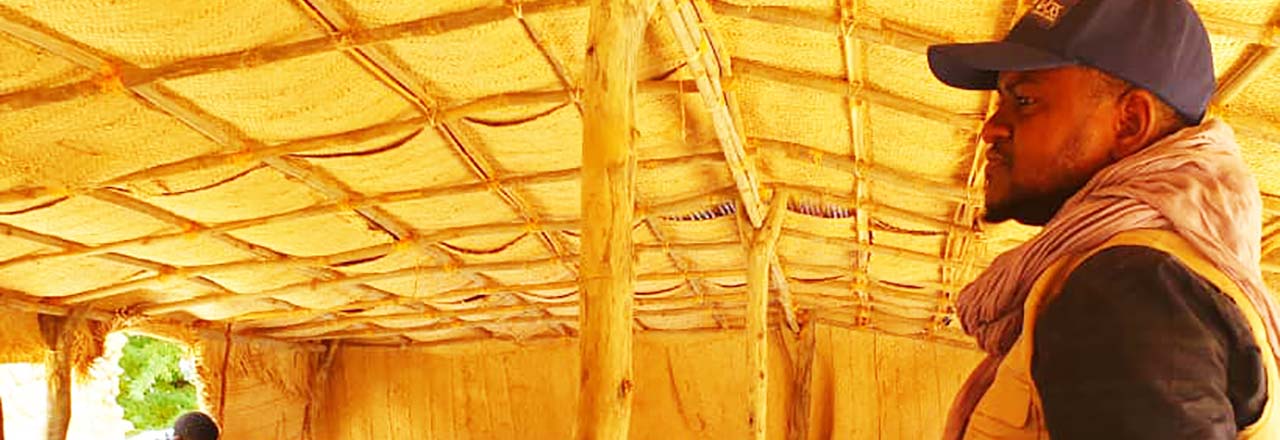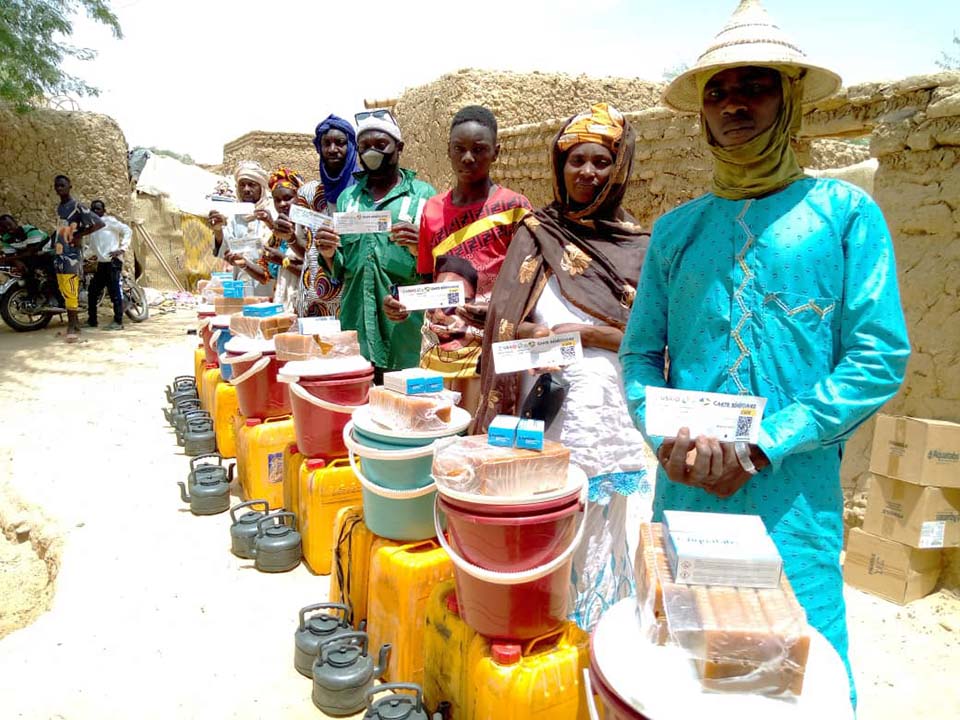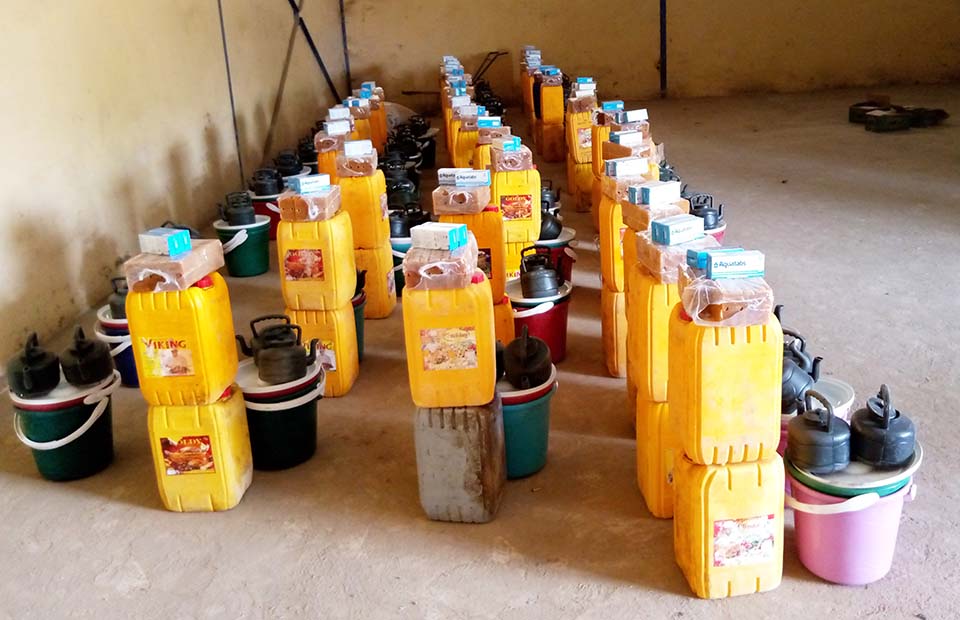

Aiding Mali Flood Survivors
In 2022, the West African country of Mali was struck by torrential rain and flooding, resulting in hundreds of casualties, the displacement of thousands more and the destruction of nearly 2.5 million acres of cultivated land. According to the United Nations High Commissioner for Refugees, in 2022 in Mali more than 41,000 people were affected by flooding and 13,000 were displaced.
Kadia Sacko, a farmer and fish seller from the village of Garbakoïra, saw her house damaged and her possessions swept away.
"The floods of December 2022 had a major impact on our living conditions, causing the loss of our means to survive and encouraging a wave of people to flee our village," says Kadia. As a fisherman's wife, like many women in her community, Kadia sells fish to support her family. This work, which has been carried out by generations of her family, has now become almost impossible for her and others because of the floods.

Flood survivors collect supplies in Diré, Timbuktu.
Photo by Mohamed Elmoctar/CRS
Thanks to the Rapid Response Fund Project provided by the United States Agency for International Development, Catholic Relief Services was able to help Kadia and her family with emergency kits and essentials including two buckets, two 20-liter cans, 16 pieces of soap and 200 water purification tablets. They also received cash aid to build a shelter and to help with other needs. “This assistance package enabled me to pay for necessities to feed my family," she says.
The Rapid Response Fund project operates in Mali, Burkina Faso, Cameroon and Niger. In Mali, according to the UNHCR, drought and flooding have affected the agricultural sector, the mainstay of the national economy accounting for 45% of gross domestic product and employing around 80% of the population. By damaging or destroying latrines, the floods have also caused a health risk.
In the Mali village of Teou in the commune of Diré, Alassane Mahamane is a fisherman, farmer, and father of 12 children. A project participant like Kadia, he knows the threats to health. "It's generally the period when children are sick with malaria because of the winter season and our toilets become impassable because of the water level,” he says.
"Before this flood, we used to farm and fish. We had plenty of rivers, fishing ponds and irrigated areas, which enabled us to meet our needs," says Alassane. "But the rising waters have put a brake on our activities, destroying our houses, our dikes to protect our crops, and areas favorable to fishing," he says.

As part of the Rapid Response Fund project in Mali, assistance kits are assembled then distributed based family size.
Photo by Mohamed Elmoctar/CRS
The team of CRS’ partner Association Subaahi Gumo, in collaboration with Diré's local social development service, produced a list of 2,492 families—totaling 15,827 people—affected by the December 2022 floods.
"Nine hundred and forty-six beneficiary households were assisted in 58 localities," says Mohamed El-Moctar, the Rapid Response Fund project manager. "The 946 households benefited from 1,500 kits divided between the three sub-sectors. This means that some households benefited from one, two or all three kits at the same time," Mohamed adds, noting that the size of the kits depends on the size of the household.
In the Sahel region, Mali remains vulnerable to climate hazards such as drought, floods and crop pests. These hazards are serious constraints on development and food security, and their intensity and frequency are likely to increase with climate change.

